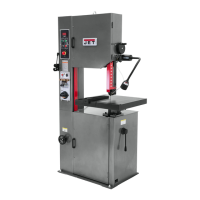- ----
Material Composition
Carbon Steel - low cost, for use with non-ferrous
materials, wood, and plastics.
High Speed Steel - resists heat generated by dry
cutting. Used for ferrous metals and are more
expensive than carbon steel blades.
Alloy Steel - tough and wear resistant, cuts faster
with longer blade life. Used on hard materials. More
expensive than carbon or high speed steel.
Carbide Tipped - for cutting unusual materials such
as uranium, titanium, or beryllium. Very expensive.
Tooth Shape
Note: When cutting thin materials, the rule for blade
pitch is to have a minimum of two teeth engaging the
material being cut at all times.
Standard Tooth - generally used to cut ferrous
metals, hard bronze, hard brass, and thin metals.
Skip Tooth - have better chip clearance (larger
gullet) and are used on softer, non-ferrous materials
such as aluminium, copper, magnesium,and soft
brass.
Hook Tooth - provides a chip breakerand has less
tendency to gum up in softer materials. Used in the
same materials as skip tooth but can be fed faster
than standard or skip tooth blades.
Set Type
Straight Set - used for free cutting non-ferrous
materials; Le., aluminum, magnesium,plastics,and
wood.
Wavy Set - used on materials of varying thickness
(pipe, tubing, and structural shapes).
Raker Set - used in large cuts on thick plate and bar
stock where finish of cut is not as important as
speed.

